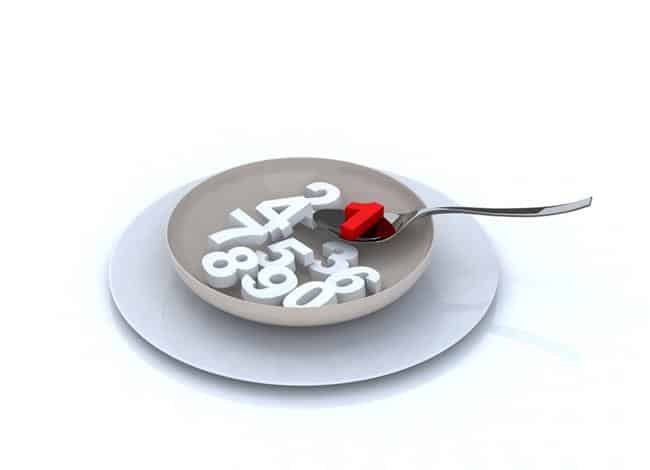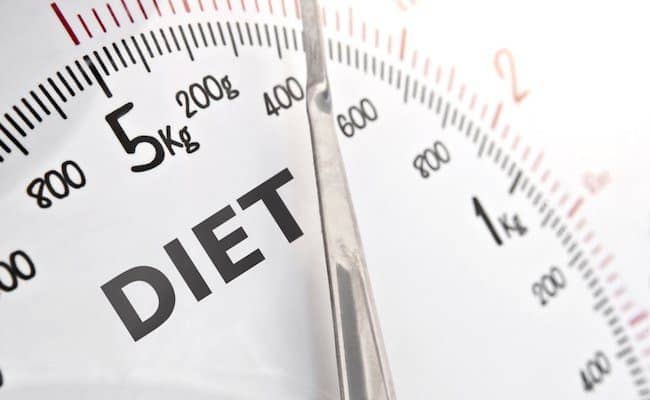
Knowing how many calories your body uses can be important for guiding accurate weight loss and weight maintenance. The basal metabolic rate (BMR) and resting metabolic rate (RMR) both tell you how many calories your body uses at rest just to support organ function. These measurements do not include movement; it’s only the energy used for maintaining life when you are awake.
Energy used by the brain, heart, diaphragm and liver are examples of energy included in RMR and BMR. It may be surprising to know RMR/BMR is the largest calorie expenditure for adults.
The RMR and BMR are usually used to mean the same thing. In fact, there is some controversy (1) in scientific literature over the differences between the two measurements.
There are some slight differences between RMR and BMR, but in general they are both measurements of your body’s calorie requirements at rest.
Both can be used as a base to estimate body energy needs.
Differences between BMR and RMR
Both RMR and BMR can be measured through assessing how much oxygen your body uses. Lean body mass and fat mass use oxygen differently.
Therefore, by breathing into a medical device over a period of time, a computer can estimate your RMR/BMR. There are also equations designed to estimate RMR/BMR by plugging in your weight, height and age.
Using an equation to estimate RMR/BMR is easy but may be less accurate.
Both tests require you to remain still, not moving but not sleeping. You lay down breathing into a device until the test is over.
The difference between RMR and BMR is usually noted in the requirements leading up to testing. BMR is usually used in a research setting, and the test is started right after someone wakes up. There is tighter control over how much the person moves before the test, and the test is taken after an overnight fast.
RMR testing is taken when the person is at rest but may not be immediately after waking up. In general, the guidelines for doing an RMR are slightly more relaxed, and RMR estimates tend to be a little higher than BMR estimates.
Which one is best – BMR or RMR?
BMR may be slightly more technically accurate, but in general both are considered quality measurements of energy needs.
Measuring RMR or BMR by gas analysis is considered the golden standard. The problem with this for many people is this testing can be expensive or hard to find. This analysis is usually offered in medical settings or in research.
A more indirect way of measuring RMR or BMR is by using standard equations. The problem with this method is it is less individualized and there are many different equations you could use.
A 2013 study (2) compared RMR equations for 38 women to their actual measured RMR. Researchers found in general all RMR equations provided over predictions of RMR ranging from 5.5% to 17%.
Factors influencing BMR and RMR
RMR or BMR (referred to as RMR) can change from a variety of factors including body composition, weight, heart rate, age, sex, menstrual cycle, smoking status and caffeine intake.
Body size influences RMR. What may be surprising is that with weight loss, RMR actually goes down. With weight gain, RMR goes up. This is why with weight loss it can be helpful to measure RMR at different times because it will change as weight changes.
Exercise increases calories needed by the body, but long term exercise can also increase lean muscle mass (3).
Therefore, long term benefits of exercise can help increase RMR because of the increase in lean muscle mass. On the other hand, if lean muscle mass goes down, RMR can go down.
As we age, RMR goes down. Exercise can help counteract this effect by preserving lean muscle mass. In general, males usually have higher RMR levels compared to females. Caffeine intake can increase RMR, and smoking may have a small influence on RMR levels as well.
Some people naturally have a higher RMR than others because of genetic differences. However, the benefits from exercise on RMR can benefit everyone.
What to do after you know your BMR or RMR
One reason to measure RMR/BMR is to get a baseline of someone’s calorie requirements. From this number, you add on calorie needs for planned exercise, activities of daily life and other body energy needs like digestion.
From this total estimated calorie amount, you can surmise a calorie daily total.
If weight maintenance is desired, your total calorie number is the goal.
If weight loss is desired, you will want to stay under this total calorie number. Weight gain will require additional energy above your calculated needs.
Do you need to know your RMR for weight loss? Not necessarily. It can be a helpful tool, but you could have weight loss without this information.
See also: How many calories per day to lose weight.
Conclusion
RMR and BMR are basically the same measurement of how much energy your body needs at rest. The body needs energy to make the heartbeat, form new cells, for respiration, etc.
This calorie amount is the largest way we expend energy. It can be helpful to know your BMR/RMR for weight loss, maintenance or weight gain.
There are some small differences with BMR and RMR mainly in the protocol before the test is taken. BMR is usually used in research settings because there is tighter regulation on what is done before the test.
BMR is taken right after waking up and after an overnight fast. There is tighter control on how much movement the participant does before the test. RMR may be taken later in the morning, and there isn’t a control over how much a person has moved before the test.
Because of this, RMR measurements are usually slightly higher than BMR. However, both measurements are considered a golden standard for calorie requirements.
Equations estimating RMR can have some variance and may be an overestimate compared to actual RMR. There are factors that can influence RMR such as body weight, body composition, sex and age.










